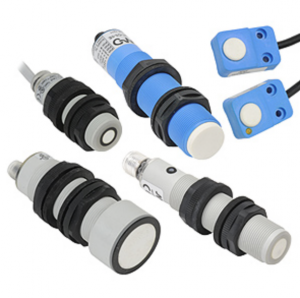Ultra Proximity sensors are used in the manufacturing industry to help in monitoring situations in various areas. This is because these sensors can survive from extreme conditions. Due to their design, they are usually used to detect the level of liquids in storage tanks, and bins to prevent instances of spilling. Besides that, they are used to detect objects by calculating how far they are from the target. And that’s not all.
Ultrasonic Proximity sensors can differentiate objects according to size and height. In fact, ultrasonic sensors are very efficient in supervising situations. Below is a list of helpful things that are worth knowing about ultrasonic proximity sensors.
- They Are Not Limited by Color or Transparency
 Proximity sensors will detect any object regardless of its color. Whether an object has a bright or dark color, the sensors will still be able to identify it. This feature explains why proximity sensors are widely used in automated car wash stations and unmanned vehicles. Moreover, these sensors are able to identify even objects that are transparent. However, proximity sensors can’t be used to measure the thickness of a container. This is simply due to the fact that they are not designed to work in vacuums.
Proximity sensors will detect any object regardless of its color. Whether an object has a bright or dark color, the sensors will still be able to identify it. This feature explains why proximity sensors are widely used in automated car wash stations and unmanned vehicles. Moreover, these sensors are able to identify even objects that are transparent. However, proximity sensors can’t be used to measure the thickness of a container. This is simply due to the fact that they are not designed to work in vacuums.
- Covers Up to 70 Feet
Ultrasonic proximity sensors can detect an object while it’s 70 feet away. Whether it’s a human being, an animal or a machine, the sensors will issue an alert the moment the object crosses into the 70 feet radius mark. This feature makes these sensors ideal for security purposes. Bigger objects can be defected much earlier than smaller objects. This is because huge objects usually produce an echo that’s reflected to the detector for identification to begin. Objects that are small in size can’t be detected when they are far because their echo doesn’t go far.
- Computers are not Necessary
Some people assume that ultrasonic proximity sensors must be connected to a computer to function efficiently. As a matter of fact, the sensors are designed to work independently in any area that they are applied. A computer is only needed when using programmable sensors. This is because you can’t adjust the settings of such models without connecting them to a computer.
- They Don’t Function When Exposed to Extreme Heat
You should never install proximity sensors in tanks that store heated liquids. This is because these sensors can’t survive from high temperatures. In fact, the sensors should only be mounted on the roof of the tank to make sure it doesn’t come into contact with the hot liquid. If the sensor has to be installed outdoors, a plastic shade should be used to protect it from the hot rays of the sun. Too much causes the sensors to give misleading information.
- Easy to Maintain
Although ultrasonic proximity sensors are complicated, maintaining them is not rocket science. Each sensor is housed is a durable casing. All you have to do is clean the face of the sensor on a regular basis using a dumb piece of cloth. This helps is removing any dust, snow or fog that might have accumulated on the sensor’s face. For more insights on ultrasonic proximity sensors, please visit https://www.hoffmann-krippner.com/ultrasonic-proximity-sensors/.






































